Class Based RPG vs. Classless RPG Pros and Cons
This post is primarily for people who either love game design or who love learning about in-depth aspects of
tabletop roleplay games.
This post isn’t so much a post about Eternity TTRPG (although we will talk about Eternity TTRPG quite a bit), but about the RPG and TTRPG genres in general. The topic is whether you should choose to play a class based RPG or a classless RPG. It’s a topic that’s always circulating in the game design world, and we’ve been answering a lot of questions lately about this topic on various forums. So, here’s our “official response” to which type of game we think is better.
Our answer: we have no definite answer.
It depends on the type of player and what they’re after, for which is “better.” If you are a game designer or you’re thinking about making a game, you will never please everyone. It’s good that you realize that now and never forget it. If you make the best game ever that is a class-less game, and you present it to people who love class-based RPGs, they will not like (or at least will not love) your game. And vice versa.
So, instead of giving a definite answer on which is better, we will simply give you the facts and let you decide.
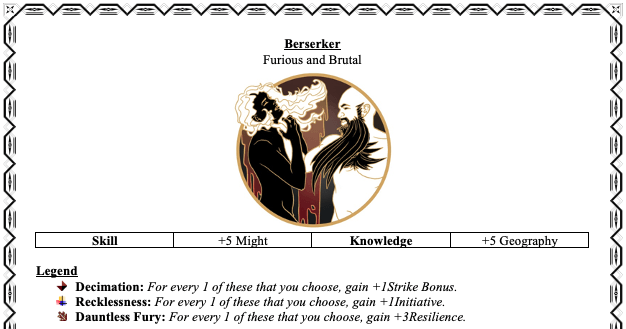
Class Based RPG Pros
Many, many roleplay games feature “classes” to define what characters can do, make players feel special, and give them roles within their gaming group. The idea is to let players choose a thematically-specific set of “powers” or abilities that is preset. As the player levels up or advances their character they gain all the abilities available to their class. At high levels, a character even comes to define that class as its paragon. There are many class-based RPG pros.
The reason why classes are so common in games is because, if designed well, classes are incredibly fun. The idea of becoming a master wizard, the world’s best thief, or a raging bro-dozer-like berserker certainly has its appeal. You get to look at a list of options, pick the class that sounds like the most fun/ exciting/ enjoyable, and become that class.
Class Based RPGs Are Simple
Plus, class-based RPGs are simple. There’s no demand for players to learn the entire game all at once. They can simply start off by picking their class’ first ability, then go from there. As they get better at the game, they are slowly introduced to new abilities – often one at a time.
On the other side, people who have been playing RPGs and TTRPGs for a long time and already know every ability that each class offers might eventually get bored. Classes can be confining if you already know what’s coming (if I play a berserker, I know what I’m going to get at Lv.1, 2, 3, and so on). After multiple times playing new characters, classes can lose their sense of wonder.
Depending on the game system, there’s often less opportunity to creatively build characters in a class-based game… Especially if the idea you have for your character can’t be represented by one of the game’s classes.
Class Based RPGs Provide A Framework For Creativity
For new players, class-based RPGs provide a framework for creativity by giving starting ideas (your character can do x, y, and z. So, now knowing that, what do you want to do?). Newer players may not have grand ideas of what they want their character to be, the first time playing a game. Classes make it easier for them by limiting their options, and actually instill creativity by giving them a starting point. “Pick a class and roleplay how you imagine that class to be.”
Even many advanced players still love playing classes because of the themes they represent. There are many gamers who only ever play paladins, or druids, or whatever – because they love what that class “is”, “does,” or represents. My favorite class, for example, is the fallen paladin, because I love doing whatever I want to with my character. Little to no thoughts of morality and consequence, basically ever. Gaming is a fun way for me to explore other sides of my psyche, and fallen paladin lets me do that while laughing about it, with friends.
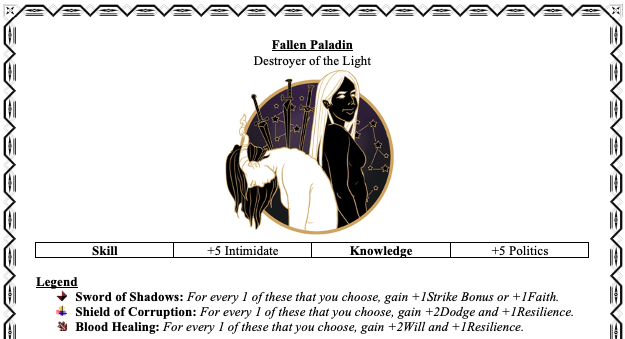
Classless RPG Pros
On the other side of the game design spectrum is a classless RPG. If you’re playing a roleplaying game, you should be able to create any kind of character you’d like. There are no limits to the mind, and if you can think of a character you want to play, you should be able to. Right? That is the mindset that defines a classless RPG.
The idea is that instead of letting the game and its rules define a character for you (such as a class would do), you create a character in your mind, then pick powers, skills, and abilities that conform to your own mental image. Having a class, in this sense, can be limiting. What if I want to be a fallen paladin who also has some access to the light? Maybe he’s currently in transition from his former life of a paladin to that of darkness, but he’s not quite there. Wouldn’t it be cool to have light and dark powers during that time?
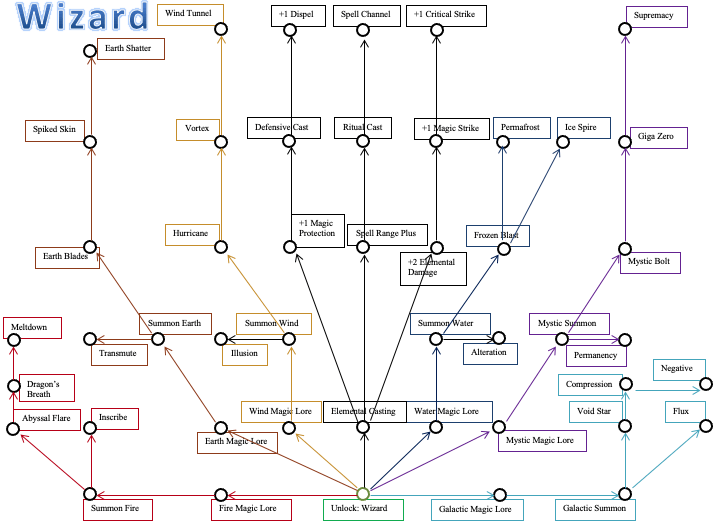
Classless RPGs Have More Options and Combinations
“Well, that would be great, but there is no class in the game we’re playing that’s both a paladin and fallen paladin…” Basically, a classless RPG has more options and combinations for characters to manifest.
To be clear, any good games allow for players to take its existing rules set and adjust based on what makes sense for the player and their character. Games should never hinder players’ creativity because of rules. That’s not very fun. Most people play roleplay games so they can roleplay. And they want to play the characters they have in mind, not be boxed in by rules.
“Ok, so there’s no paladin-fallen/ paladin hybrid in the game, but it’s just a game, so let’s work the rules a bit. How about you take one level in paladin, then one level in fallen paladin, and so on?”
That kind of solution can work, in a class-based RPG. But some people like the freedom to just pick any abilities or powers they want. Instead of taking an existing rule set and changing it, like in the above example, why not just list out all powers in the game then let people choose what they like?
A Classless RPG Has More Depth From the Very Start
A classless RPG has more gaming depth from the very start. Another way to say this is that the level of entry is much higher. To make really “good” characters, players need to thoroughly understand the game system. But, the depth of character creation, even from level 1, is much greater than a class-based RPG. The reason why is that players can start building their character in any direction, right from the beginning. They can always pick a simple ability they think is fun, then as they get more comfortable with the game, add more powers as they go.
All in all, even RPGs fall on a large spectrum. Most games, at some level at least, are often mixed between a classless RPG and a class-based RPG. Many games have some form of base class from where players start, but they can branch out in any direction. Maybe they start out as a “berserker” but they end up as a “berserker-wizard” because they keep selecting new spells as they level up, instead of melee techniques.
Or, games allow for multi-classing. Players start out with a very defined class but can quickly add traits or skills from any other class of their choosing, increasing the diversity and depth of gaming experience. Mixed games like these are a great way to allow for more free-form gaming, while keeping most of the benefits of a class-based RPG.
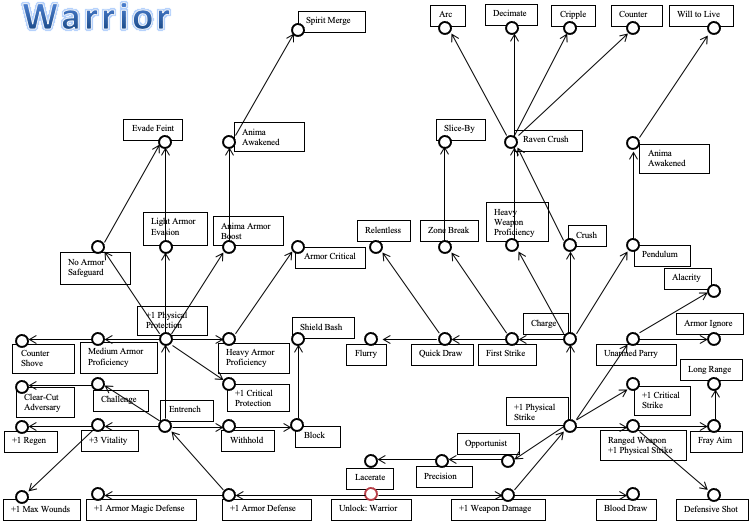
Eternity TTRPG’s Solution
As you may have guessed, we struggled with this topic quite a bit when designing Eternity TTRPG. Some people love class-based games while others find them restricting. The first two editions of Eternity TTRPG (well before we self-published) were class-based. We had something like eight classes at the time that were all highly thematic and individualized. Then, in a third edition, one of our early players mentioned Skyrim and how much they loved creating a character entirely their own – no “class” restrictions. So, guess what? We tried that too. But, with some problems.
Here was the big problem with our classless RPG experience and why we eventually switched back to a class-based system: by the end of the campaign, everyone’s characters were exactly the same.
Yes, they all started out completely different with totally unique character concepts, and they were substantially unique and different characters for the majority of the campaign. However, as the game progressed and players started seeing what worked with others’ characters, they started copying strategies.
Everyone’s A Super Swordsman-Wizard-Dragon
“That swordsman can heal himself? Maybe my chaos wizard could benefit from a heal as well.”
“I can leap fifty feet into the air, but you can fly? I’m going to start specializing towards flying, too. That sounds way better.”
Since many classless RPGs have no rules to prevent characters from building anything they want, given enough time and gaming sessions, they can (and eventually do) all build super swordsmen-wizard-dragons. Everyone’s characters typically end up being exactly the same by the end of the game. What we’ve found with class-based RPGs is actually the opposite – that characters actually get more defined throughout the game, not less. Characters get further into the classes they’ve chosen, thus providing even stronger role fulfillment (based on their classes) in their adventuring groups.
With classless games? Everyone has flight, invisibility, instant heals, and divine shield. That’s just the way it goes.
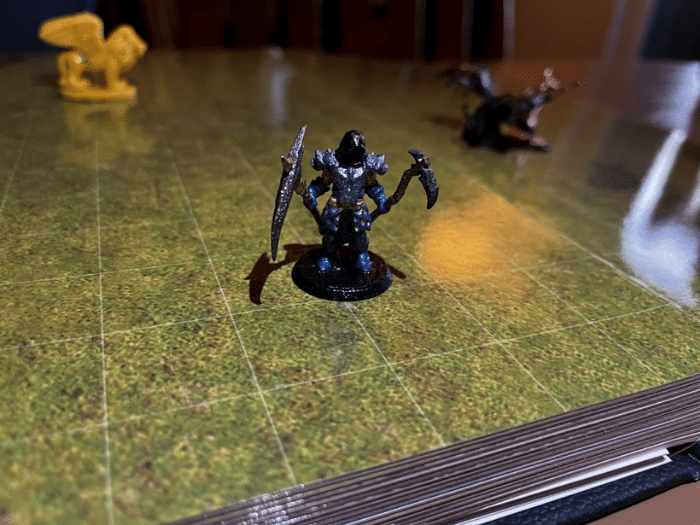
Eternity TTRPG’s Roots
It took us a while to come back around, but we eventually did settle on a primarily class-based RPG. It’s also true to our roots though, and we just decided that Eternity TTRPG, because of the type of game designers we are, works better as a class-based game. No doubt, other designers have made classless RPGs that really work a lot better than our short foray into the free-form world, and there’s certainly great classless games out there. But that’s not us.
Some of our most-read posts for Eternity TTRPG have been about the Eternity TTRPG classes. As we’ve looked back over the last several months of just our web traffic alone, it’s obvious that people love the concept of RPG classes, and love to see what classes in any given RPG can “do.”
At Eternity TTRPG, we love RPGs of all kinds. We grew up playing video game RPGs. It was always fun just to see the concept of classes for each game. We used to look up other games just to see what their “classes” could do – how each game defined classes, and what made those classes special.
Ultimately, we have fun with class-based games, so we had to make Eternity TTRPG class-based.
Epic Levels And Advancement in Eternity TTRPG
There’s been a lot of work going into the Eternity TTRPG main game. We update the game every 6-12 months or so, and email that update for free to all game owners.
But lately we’ve been hard at work at the Eternity TTRPG Epic Expansion, which will allow players to play from Lv.10 – 100+. Yes, that’s right. Now that the main game has such a robust foundation, it’s possible to allow for essentially unlimited levels. The way we’re going to do it though? A form of classless RPG gaming similar to multi-classing.
Once you hit Lv.10 with a class, you can either start at Lv.1 in a new class or take an “epic level” in your existing Lv.10 class. My fallen paladin I mentioned earlier? He’s now Lv.21. Lv.10 fallen paladin. Lv.10 revenant. Lv.1 dragon knight. I’m getting to play multiple classes, taking my favorite portions from each. I still have structure when playing, but the game is allowing me to sort of “break the rules” a little bit and go outside of the box. It’s led to a lot of great roleplaying moments, adding new classes to my character, as well.
Look for an upcoming release of the Eternity TTRPG epic expansion.
Epic Spells And Abilities
Starting at Lv.11 and every 10 levels thereafter, you can choose an “epic” spell or ability. Epic spells and abilities are twice as powerful as any critical and allow you to choose small areas in which your character becomes truly world-class. The Eternity TTRPG epic expansion merges the best parts of a classless RPG and class-based RPGs by “breaking the base game’s rules” at higher level play by allowing players to mix their favorite parts of various classes.
Do we anticipate everyone to eventually become super swordsmen-wizard-dragons? Yes. By perhaps Lv.100+. But Eternity has 24 classes, meaning that a player would have to reach Lv.240 to become even close to the same as everyone else (due to epic levels). That’s still possible. We’re sure someone will eventually play Eternity TTRPG enough hours to hit that level. But’s it’s not a big concern for us. If you hit Lv.240, you probably should be able to be anything you want in life.
Dice, Dungeons, Games & More - Eternity TTRPG
Share This Article

Author - Jacob Tegtman
Dear reader, I hope you enjoyed this article. Tabletop gaming has been a passion of mine since I was 6 years old. I've played just about every game from Dungeons and Dragons to video games like Final Fantasy. These games have inspired me, made me laugh, made me cry, and brought me endless hours of enjoyment.
I started Eternity TTRPG - and the indie tabletop game that goes along with it (Eternity Shop) - to share my love of gaming with others. I believe that in our technology-driven age, tabletop games help bring a sense of magic and community back into our world.
If you love the site, please share it with others! I have lots of gaming-related material for you to peruse and use in your own gaming sessions. If you have any questions about the site or want to contribute, just send me a message using the "Contact" page, which you can find in the site's footer.











